In the Studio with Tasneem Sarkez
By Keshav AnandNew York-based artist Tasneem Sarkez’s works amalgamate the personal with the universal, informed by an aesthetic she describes as “Arab kitsch.” Her multidisciplinary practice weaves together symbols from pop culture with historical traditions, forming a visual tapestry that speaks to her lived experience as an Arab woman existing in the diaspora. Through her investigations, Sarkez probes the intersection of identity and culture in the digital age, exploring the Internet’s capacity to reshape and disseminate imagery. Ahead of the artist’s solo exhibition, White-Knuckle, opening on 16 January 2025 at Rose Easton gallery in London, Something Curated pays a visit to Sarkez’s studio.
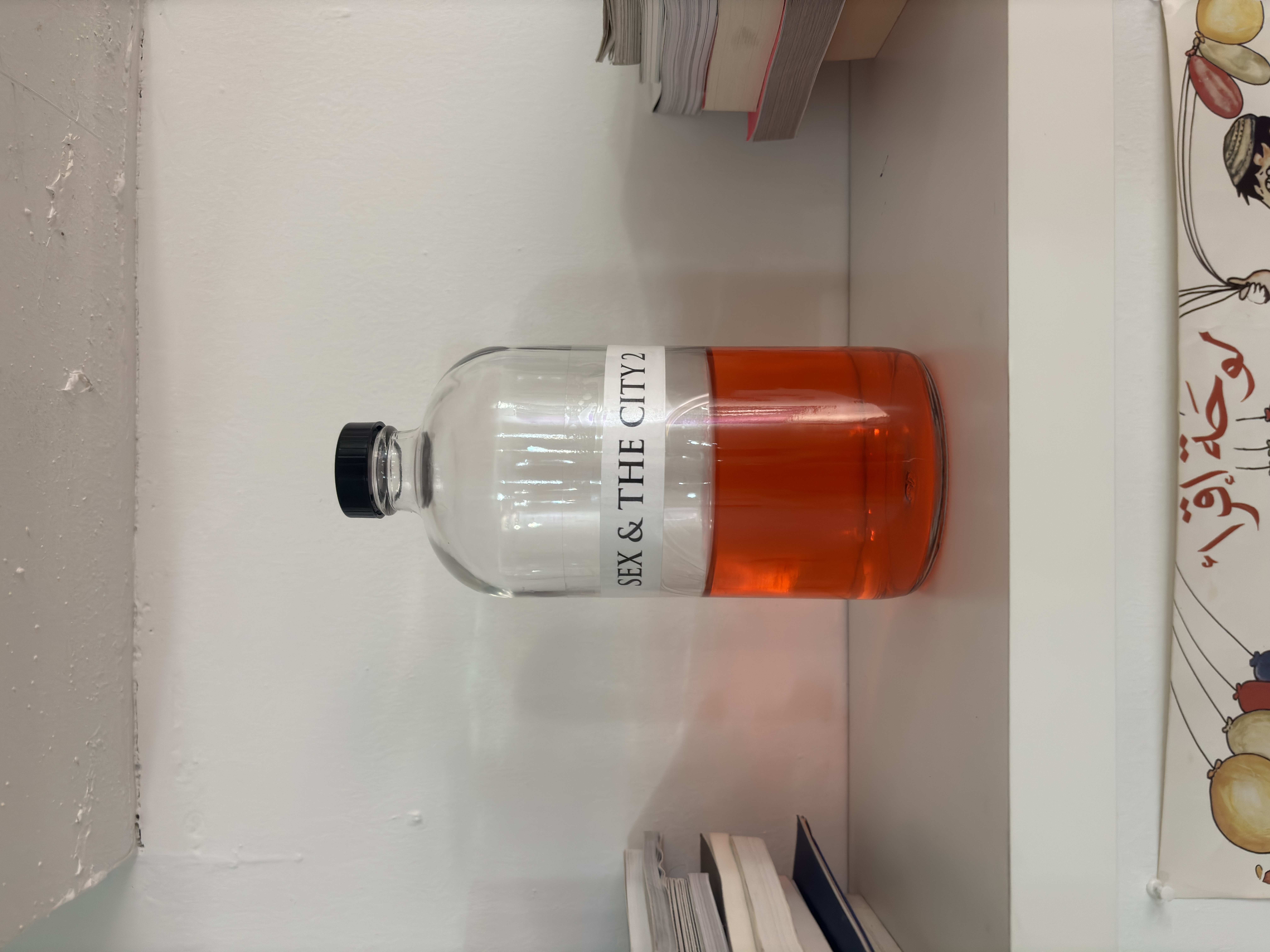
Keshav Anand: From fairground rides to political theatre, your work links amusement with structures of power. What interests you in this relationship?
Tasneem Sarkez: I think one of the biggest markers of the 21st century is the way we have valued speed. Speed in production. Speed in industrialisation. The way that society has shaped itself around this idea of mechanics and “the machine” has trickled its way into our everyday lives—how we value our time. This concept of mechanised movement has a direct relationship to power. The agency in being the one to initiate the speed of a car, the beginning of a political paradigm, or even the mass production of beauty products, has to mediate it’s ulterior motive through amusement, aesthetics, and humour.
This relationship between power, control, speed, is able to persist when it’s presented through amusement, because we are engaged and entertained by power, rather than able to see through it for its “darker” truths. I like how that tension and relationship between power and amusement can be translated to almost every different sector—from craft to machine, because I think it’s something we can all identify within our own lives. And for me, this relationship became most symbolic when I recognised it in these contemporary Arab spaces—in reality and online.
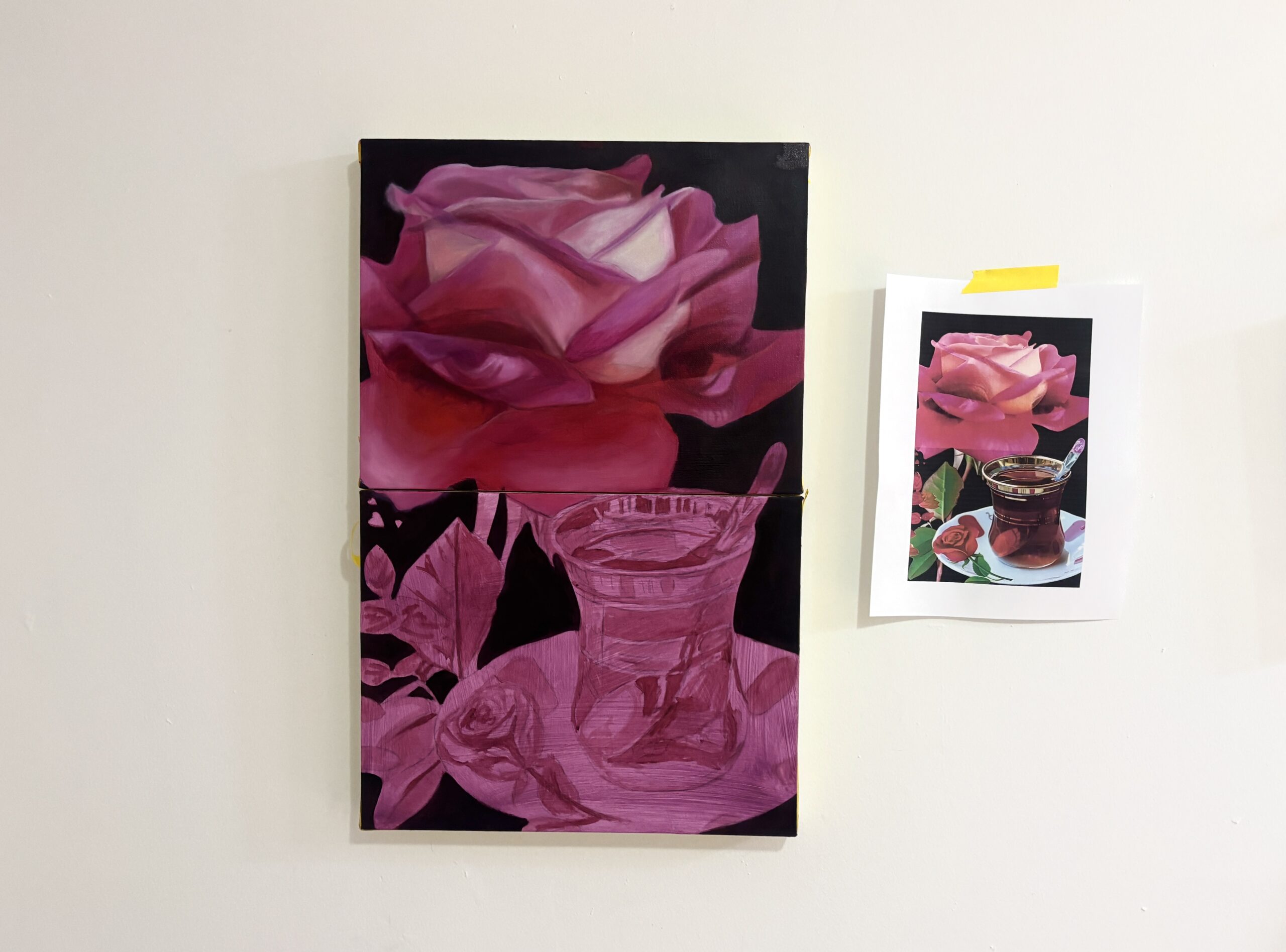
KA: Your paintings have been described as “uncanny” and almost AI-generated. How does this ambiguity between human and machine creation inform your practice?
TS: I think that sense of uncanniness can be experienced by the work, but at the same time I’m drawn to the images for the paintings ultimately by their familiarity to me. I think composing scenes where machine and humanity merge, is more about translating these abstract concepts such as Arab femininity, the language of commercial products, and ironic aesthetics of luxury and cars, to an audience that might now know otherwise. My approach to communicating these ideas is a reflection of how technology and media have the power to dictate what is considered “normal.” In imitating this sense of an “existing image” or “generated” to an Arab framework, it informs the audience of the work through a sort of art-traditional way, without compromising the inclusion of Arabness. Where still lifes meet algorithms. Technology today is establishing these new ambiguous “truths” where everything has become paradoxical.
As technology and the Internet accelerate in its abilities to not only create images, but also imagine them for us, it has left us now with the question of—can machines really represent humanity? I like to think that it never will, but what I do like, is to imagine what that place of ambiguity can look like.
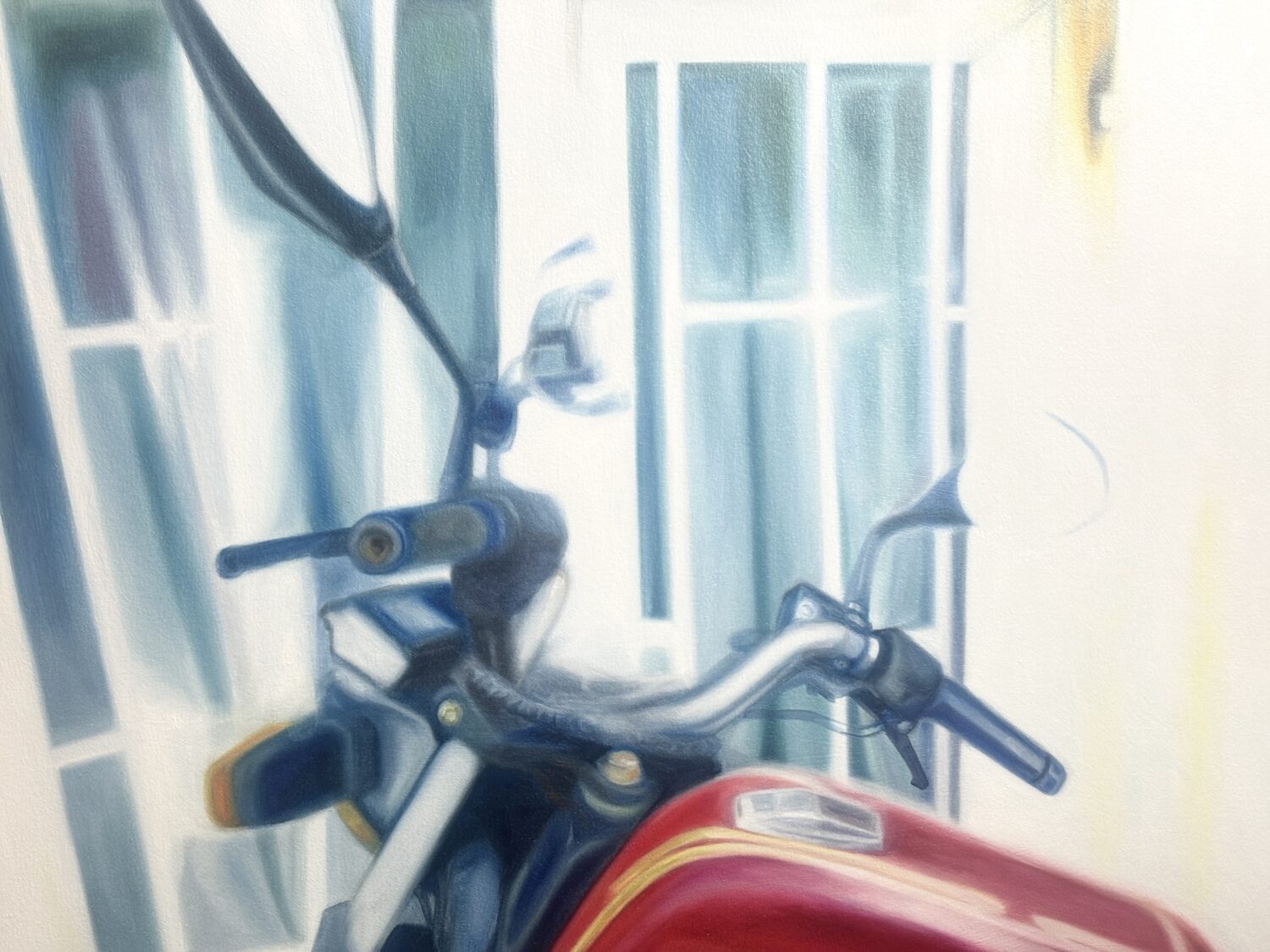
KA: What role does satire play in your work?
TS: Placing irony, humour, satire, etc., in the visuals of Arab aesthetics is a reclamation of the image of identity. In relating these meta-references and the Internet to more potent symbols, pop culture, and histories that I’m referencing, the audience can begin to break down the different layers of the work. The initial entry point of understanding for a lot of people can be the tool of satire. I naturally gravitate to irony as an agent of provoking a conversation that otherwise may not have been started.
Being able to laugh at something brings in comfort and familiarity, and operationalising that feeling to artworks informs how I create compositions and incorporate text within my work and the routine I’ve developed when I’m in my studio. The works are building their own world of patterns/algorithms that are identified in different sub cultures of the internet, often coming from Arab influences, and the hybridity of that with all kinds of circulated media we can speak to—like the choice of Impact font, Britney Spears dancing, etc.
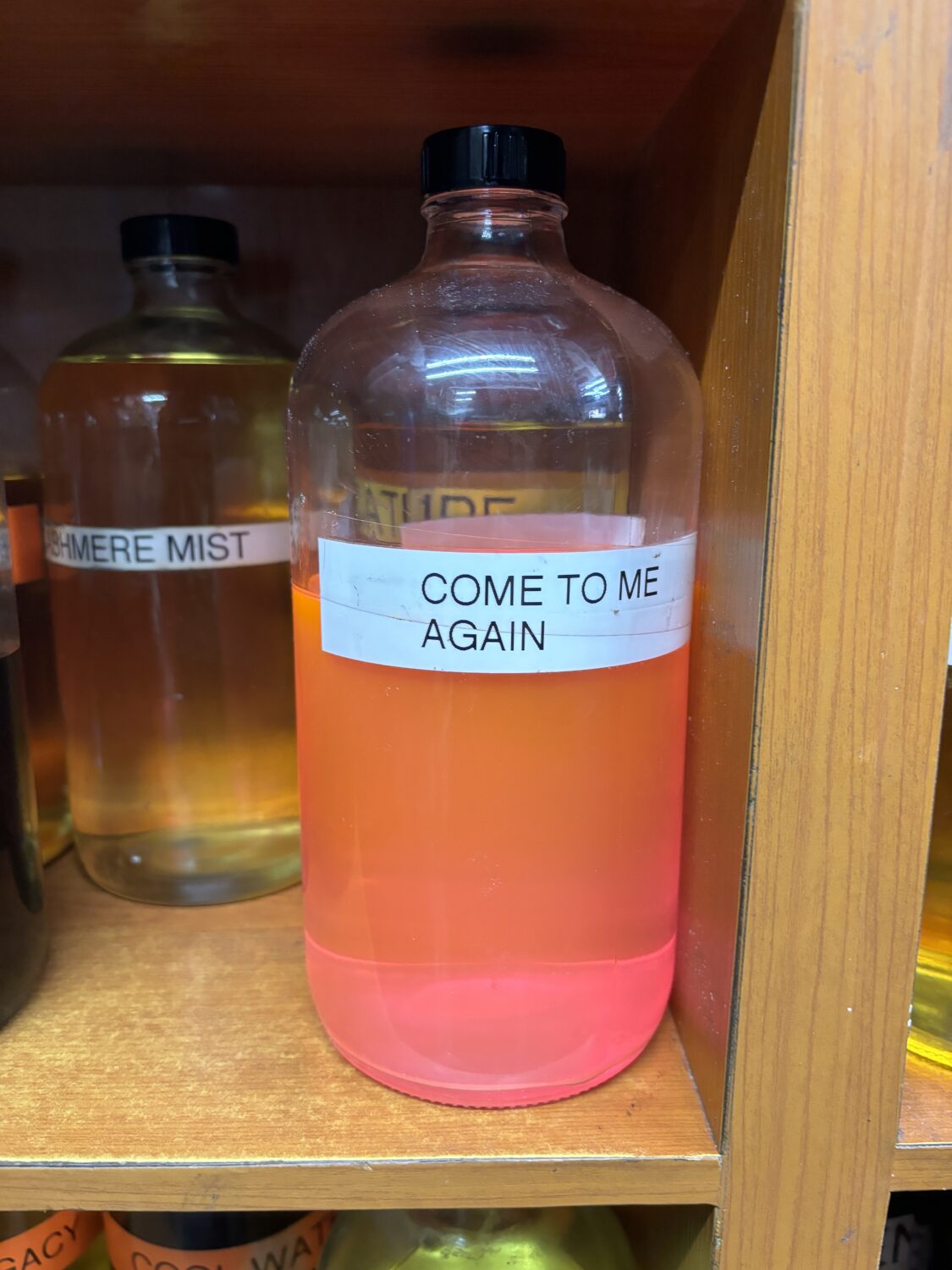
KA: Why perfume bottles?
TS: A lot of the images I’m drawn to within my paintings have this moment of things being superimposed, and similarly the branding and identity of beauty products in predominantly Arab-immigrant neighbourhoods have a strong parallel to that gesture. Even “Arab perfumes” have trended as a TikTok search this past year. In visiting a lot of these different beauty shops, discount stores, etc., these perfume bottles with arbitrary packaging were revealing themselves everywhere, and I was entertained by them. They all design the fragrances the same way, are sold by the same communities, and the best part is—none of them are selling the original. They’re selling the idea. The way they are all crafted visually with the variants of fonts, bottles, and colours, is an art form in and of itself.
One of my favourite perfumes I ever saw was labelled “Come to me again.” Immediately I thought about how playful it is to title a scent with this kind of yearning, independent of any actual brand, while simultaneously thinking about how the act of placing that sentiment on your body can also be very meaningful. That play between language, humour, objectivity, colour, and the body, prompts the audience to think about what it means to physically carry the promise of an idea—all the while knowing it’s “not real.”
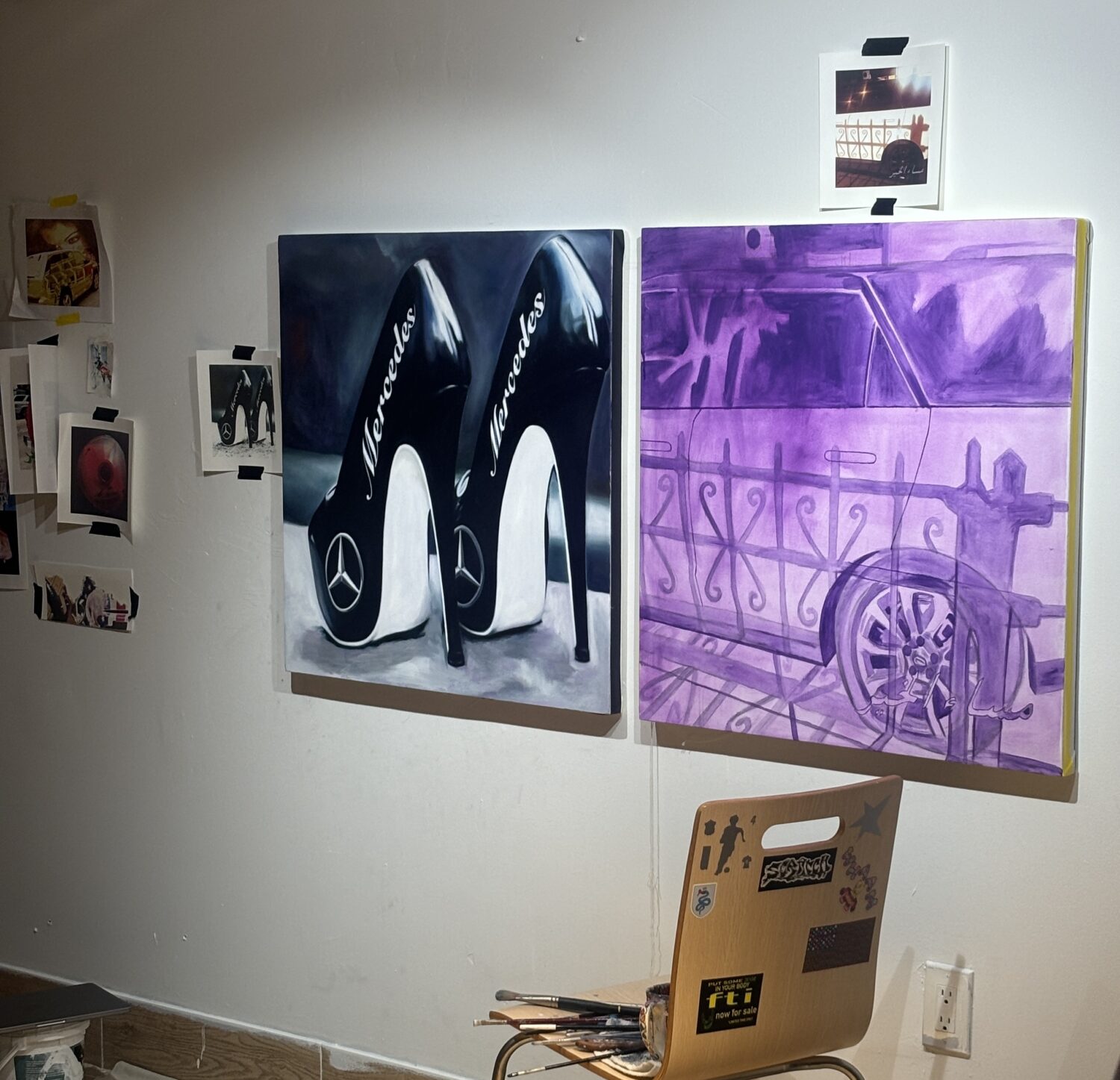
It’s laughable as a society to see how we’ve evolved to a place where these things exist, but they survive off of our aspirations. The industry of cars, beauty, fashion, politics, all have us in a trance in that way. Each person encounters these fragrances with an ontological game in their minds that brings in their personal lives, where that contemplation gets emphasised in a white-cube space. Recreating the bottles to the exact quality that they are was important to stay true to the communities they come from and how they perform.
KA: What’s your favourite meme right now?
TS: The “Ew, Brother Ew” clip.
KA: Aside from home, where are your favourite places to eat in New York?
TS: Some of my favourite places are Lovely Day, Lan Larb Chiang Mai, Ayat, Nha Trang One, and Little Morocco.
KA: And what are you currently reading?
TS: Gravity and Grace by Simone Weil.
Feature image by Tasneem Sarkez